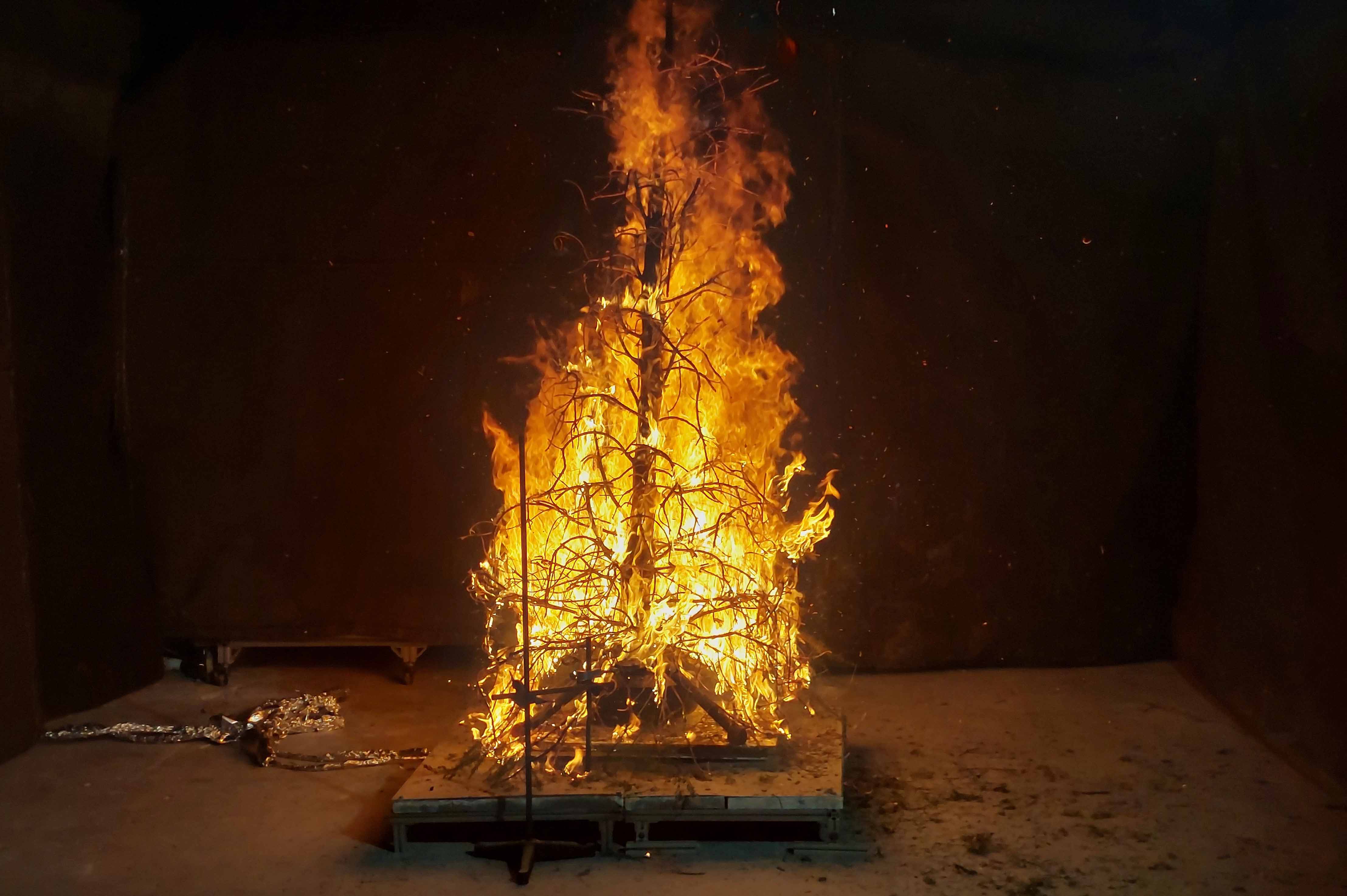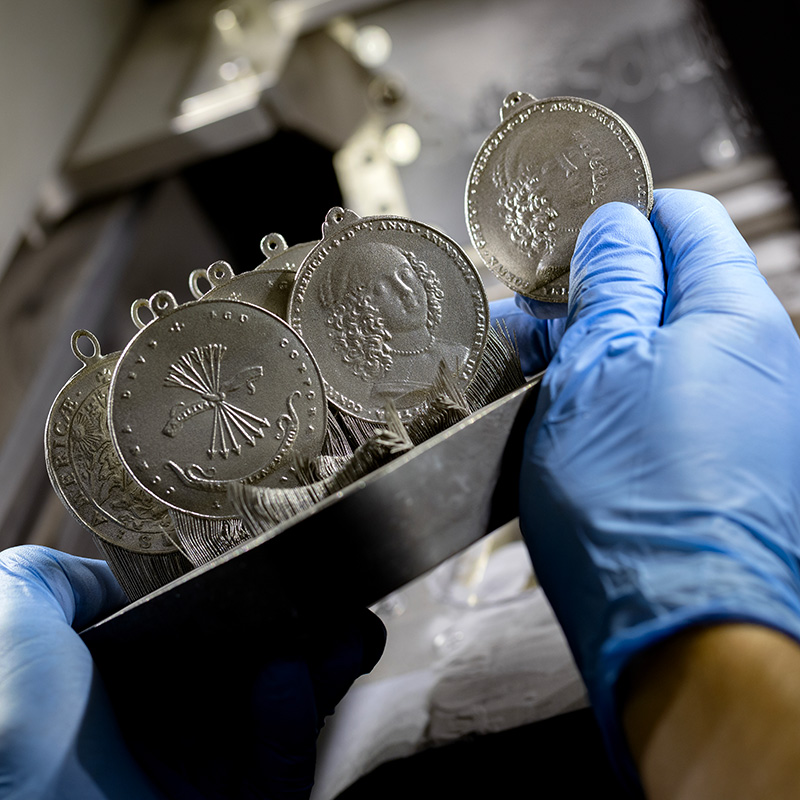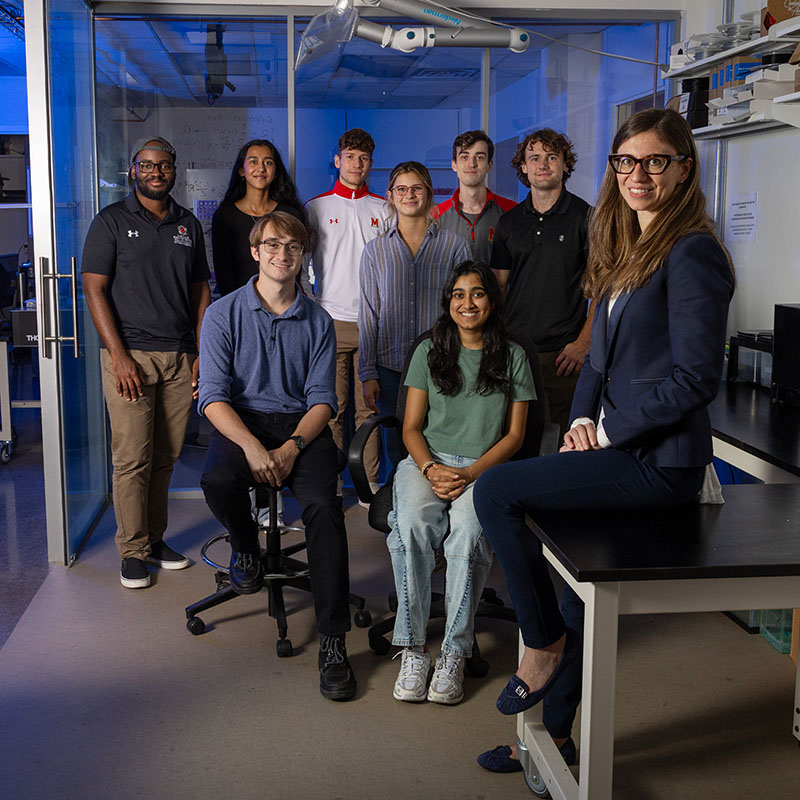News Story
UMD Calls for Holiday Safety Practices with Christmas Tree Fire Demonstrations

The Department of Fire Protection Engineering (FPE) held its annual Christmas Tree Fire Safety Demonstration on Tuesday, December 19, in an effort to raise awareness of this seasonal fire risk with the potential for the deadliest of outcomes.
At the Koffel Associates Fire Standards Laboratory, Isaac Leventon, a research scientist with the National Institute of Standards and Technology (NIST), and an FPE adjunct lecturer, conducted a series of live fire experiments demonstrating the burning behavior of well-hydrated Balsam Fir trees in comparison to unhealthy, dried out ones. Each year, Leventon seeks to educate the public about the hundreds of fire incidents that repeatedly result in structural losses and civilian casualties.
According to the National Fire Protection Association (NFPA), between 2016-2020, United States fire departments responded to an estimated average of 160 home structure fires per year that began with the ignition of Christmas trees. These accidents resulted in an annual average of two civilian deaths, about 11 injuries, and approximately $12 million in damages.
While Christmas Tree fires are not the most frequent fire events, they are particularly hazardous. A 2017 NFPA report found that home structure fires that started with the ignition of a Christmas tree are 4.5 times more deadly than those caused by the burning of any other item. This underscores the importance of maintaining safety practices in place when decorating your home for the holiday season.
The tests demonstrated the impact of moisture content on ignition, fire growth rate, and peak fire size, otherwise known as Heat Release Rate (HRR), emphasizing how these accidents can be prevented by following the safety measures recommended by the NFPA.
“The fire safety risk of a natural Christmas Tree can be greatly reduced by maintaining some simple safety measures, such as keeping the tree well-watered and away from potential ignition sources. We hope these yearly experiments help to demonstrate the value of these safety steps and the potential risks if they are not followed.”
Isaac Leventon, research scientist at the National Institute of Standards and Technology and FPE adjunct lecturer.
A second round of experiments engaged over 200 fire safety scholars, students, and engineers across 24 nations and US 10 states in a competition that would predict the burning behavior of the trees. This year marks its 10th anniversary.
To bring together members of the fire safety science community, Leventon leads the competition and develops a scoring system that helps contextualize model predictions in comparison to experimental uncertainty. Contestants were able to “build” and submit their own fire predictions by visiting the NIST Christmas Tree HRR page and adjusting four parameters that define: fire growth rate, peak HRR, duration of steady burning, and fire decay.
If you’re interested in participating in next year’s HRR competition, please refer to this website.
IN THE NEWS
-
University of Maryland showcases Christmas tree fire risks in safety demonstration, Fox 45 News Baltimore
Published December 19, 2023









